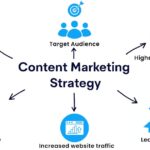Common Google Ads Problems and How to Solve Them
Google Ads is one of the most effective tools for targeting an audience and creating leads. But it is not without its problems. There are various issues that many businesses and marketers face at one time or another that affect the success of their campaigns.
Fortunately, many of these problems can be solved with the help of proper approaches and knowledge. In this blog post, we will explore some of the more common issues that people face with Google Ads and what can be done to solve these issues.
1. Low Click-Through Rate (CTR)
When the CTR is low, it means that the ads you are placing are not appealing to your target market. This can be attributed to wrong keywords, boring headlines, or even wrong positioning.
Solution:
Improving CTR requires a multi-faceted approach:
Refine Your Keywords:
Make sure that the keywords for which you are bidding are relevant to the ads and the content of the landing page.
There are other tools like Google’s Keyword Planner to help identify the keywords that have a moderate traffic in search.
Craft Compelling Ad Copy:
It is important that your ad copy is eye-catching and more to the point, something the searcher is likely to look for.
Remember to stay on the positive side and stress the advantages of the product or service you offer; do not forget about the CTA section.
Utilize Ad Extensions:
Sitelinks, callouts, and structured snippets give more information about the ad, and they make the ad attractive to the users, hence, a high CTR.
A/B Test Your Ads:
It is recommended to run the same ads in different versions at the same time to compare the results.
It has been observed that even a difference of a few words in the headline or the CTA could make a huge difference in the CTR. Google Ads management experts rely on various A/B testing methods to create an efficient PPC strategy.
2. High Cost-Per-Click (CPC)
High CPC could easily put you out of business, especially if your industry is highly competitive.
However, if the CPC is high, it can be a challenge to get a positive ROI for the campaign.
Solution:
To manage high CPCs, consider the following strategies:
- Focus on Long-Tail Keywords:
Long-tail keywords are typically less competitive and, therefore, cheaper. They may have lower search volumes, but they often result in higher conversion rates because they are more specific to user intent.
Improve Quality Score:
Google rewards ads with higher Quality Scores by lowering CPCs. Improve your Quality Score by ensuring your ads are relevant to the keywords and landing pages, and by maintaining a high CTR.
Bid Strategically:
Use automated bidding strategies like Target CPA (Cost Per Acquisition) or Target ROAS (Return on Ad Spend) to optimize your bids for conversions rather than clicks.
Narrow Your Targeting:
Focus your ads on specific geographic locations, times of day, or devices that are most likely to convert, which can reduce unnecessary ad spend.
3. Low Conversion Rate
If your ads are getting clicks but have no conversions, then your traffic is not converting to leads or buyers.
This could be because of wrong placement of ads, wrong landing page, or wrong audience for the page.
Solution:
Boosting your conversion rate involves the following steps:
Align Ad Copy with Landing Pages:
Check that the copy of your ad aligns with the content that visitors encounter on your landing page. This continuity serves to sustain the users’ attention and confidence.
Optimize Landing Pages:
The landing pages should be easy to navigate and have a strong CTA. Make sure they take time to load, are optimized for mobile viewing, and have minimal distractions on the page.
Use Remarketing:
Remarketing enables you to target users who have been to your site but have not converted into consumers.
By reminding them of your offerings, you can increase the likelihood of their buying the products.
Analyze User Behavior:
Track user engagement by using tools such as Google Analytics and see how they engage with your landing page.
Find out where people are leaving and make adjustments to increase conversions.
4. Low Quality Score
It is also important to note that a low Quality Score results in high CPCs and poor ad position, which reduces the efficiency of the campaigns.
Solution:
To improve your Quality Score, focus on the following areas:
Keyword Relevance:
Make sure the keywords you have selected match the text of your ad and the landing page appropriately.
Ad Relevance:
The ad text should be relevant to the keywords you are bidding on so that your ads are as specific as the keywords.
The higher the relevance of the ad to the search query, the better Quality Score you will receive.
Landing Page Experience:
Google takes into account the user’s experience on your landing page while assigning quality scores.
Ensure that your landing page is fast, mobile responsive, and contains relevant information that the user is looking for.
5. Ad Fatigue

Ad fatigue occurs when your audience becomes too familiar with your ads, leading to a decline in engagement and performance.
This is particularly common in remarketing campaigns where the same audience is targeted repeatedly.
Solution:
To combat ad fatigue, try these strategies:
Rotate Ads:
Regularly update your ad creatives and copy to keep them fresh. Consider using dynamic ads that automatically adjust content based on user behavior.
Expand Your Audience:
Broaden your targeting criteria to include new potential customers. This can be done by adding similar audiences or using broader keywords.
Adjust Frequency Caps:
Limit the number of times a user sees your ad to avoid overexposure. Setting frequency caps ensures that your ads remain effective without annoying your audience.
Experiment with New Formats:
Try different ad formats, such as video ads, carousel ads, or interactive ads, to engage users in new ways.
Which Businesses Have Leveraged Google Ads To Their Benefit?
1. Airbnb
Challenge:
This was an operational issue for Airbnb: how to boost bookings and grow internationally in a competitive online travel market.
Google Ads Strategy:
Google Ads was used by Airbnb to advertise the platform to specific locations with messages that appealed to the target audience.
They employed various targeting features, such as keywords associated with specific locations, seasonal factors, and travel preferences.
Results:
Airbnb was able to drive a lot of bookings through targeted and strategic advertising, especially in new areas.
The company also managed to get a better return on ad spend (ROAS) that aided them in expanding their market share in the global market and establishing the company as a leading platform for any traveler.
2. Dollar Shave Club
Challenge:
The goal of Dollar Shave Club was to challenge the normal stationary razor market and make people subscribe for their monthly delivery service.
Google Ads Strategy:
For the actual marketing campaign they employed Google Ads which allowed them to target a specific audience, specifically men searching for grooming products and other related keywords.
Dollar Shave Club used video ads to attract a large audience and search ads to target the audience with specific intentions.
Results:
This led to a massive uptake of the brand’s subscriptions, which meant that the brand was able to grow its customer base exponentially.
Through search ads and videos, Dollar Shave Club was able to differentiate itself from competitors and was later sold to Unilever for $1 billion.
3. Zappos
Challenge:
Zappos, a shoe and clothing company that operates exclusively on the Internet, wanted to boost sales of shoes and attract more customers to its website.
Google Ads Strategy:
Google Ads was used by Zappos to place bids on numerous product-specific keywords.
They also employed dynamic search ads, which enabled them to create ads from the content of their website, thus making their ad copy relevant to users’ searches.
Results:
Google Ads became an important part of the overall marketing mix for Zappos and the company recorded a significant sales growth.
Achieving Success with Google Ads
Google Ads has proven to be a game-changer for countless brands, enabling them to reach their target audiences, increase sales, and grow their businesses.
However, achieving such success requires more than just setting up campaigns. It’s about understanding your audience, continuously optimizing your efforts, and adapting to the ever-changing digital landscape.
This is where Maddex comes in. As a digital marketing agency with expertise in Google Ads, Maddex specializes in crafting tailored strategies that align with your business goals.
Contact us today, and our team of experts will work closely with you to understand your unique needs, develop a customized ad strategy, and continuously optimize your campaigns for maximum ROI.
Share
Recent Posts
-
 16 Jun 2025Content Marketing Strategy: How to Plan, Create & Grow
16 Jun 2025Content Marketing Strategy: How to Plan, Create & Grow -
 16 Jun 2025Web Design and Development: Everything You Need to Know
16 Jun 2025Web Design and Development: Everything You Need to Know -
 16 Jun 2025What Is Search Engine Optimization (SEO) and How It Works
16 Jun 2025What Is Search Engine Optimization (SEO) and How It Works -
 12 Jun 2025Top Strategies to Improve SEO and Boost Google Rankings
12 Jun 2025Top Strategies to Improve SEO and Boost Google Rankings -
 28 Apr 2025Types of Backlinks That Strengthen Your SEO Strategy
28 Apr 2025Types of Backlinks That Strengthen Your SEO Strategy -
 22 Apr 2025Using Google Analytics with Email Marketing: How to Track and Optimize Every Click
22 Apr 2025Using Google Analytics with Email Marketing: How to Track and Optimize Every Click -
 18 Apr 2025The Ultimate Local SEO Checklist for 2025: Boost Your Local Visibility
18 Apr 2025The Ultimate Local SEO Checklist for 2025: Boost Your Local Visibility -
 16 Apr 2025Gemini vs ChatGPT: Which One Produces Better Content in 2025?
16 Apr 2025Gemini vs ChatGPT: Which One Produces Better Content in 2025? -
 21 Oct 20245 Best Social Media Campaigns To Inspire You in 2025
21 Oct 20245 Best Social Media Campaigns To Inspire You in 2025 -
 21 Oct 2024How to Run Google Ads in 2024: A Step-by-Step Guide
21 Oct 2024How to Run Google Ads in 2024: A Step-by-Step Guide -
 21 Oct 202410 SEO Techniques to Boost Organic Traffic & Rankings
21 Oct 202410 SEO Techniques to Boost Organic Traffic & Rankings -
 21 Oct 2024Creative Marketing Hacks: 5 Unexpected Ways to Captivate Your Audience
21 Oct 2024Creative Marketing Hacks: 5 Unexpected Ways to Captivate Your Audience
